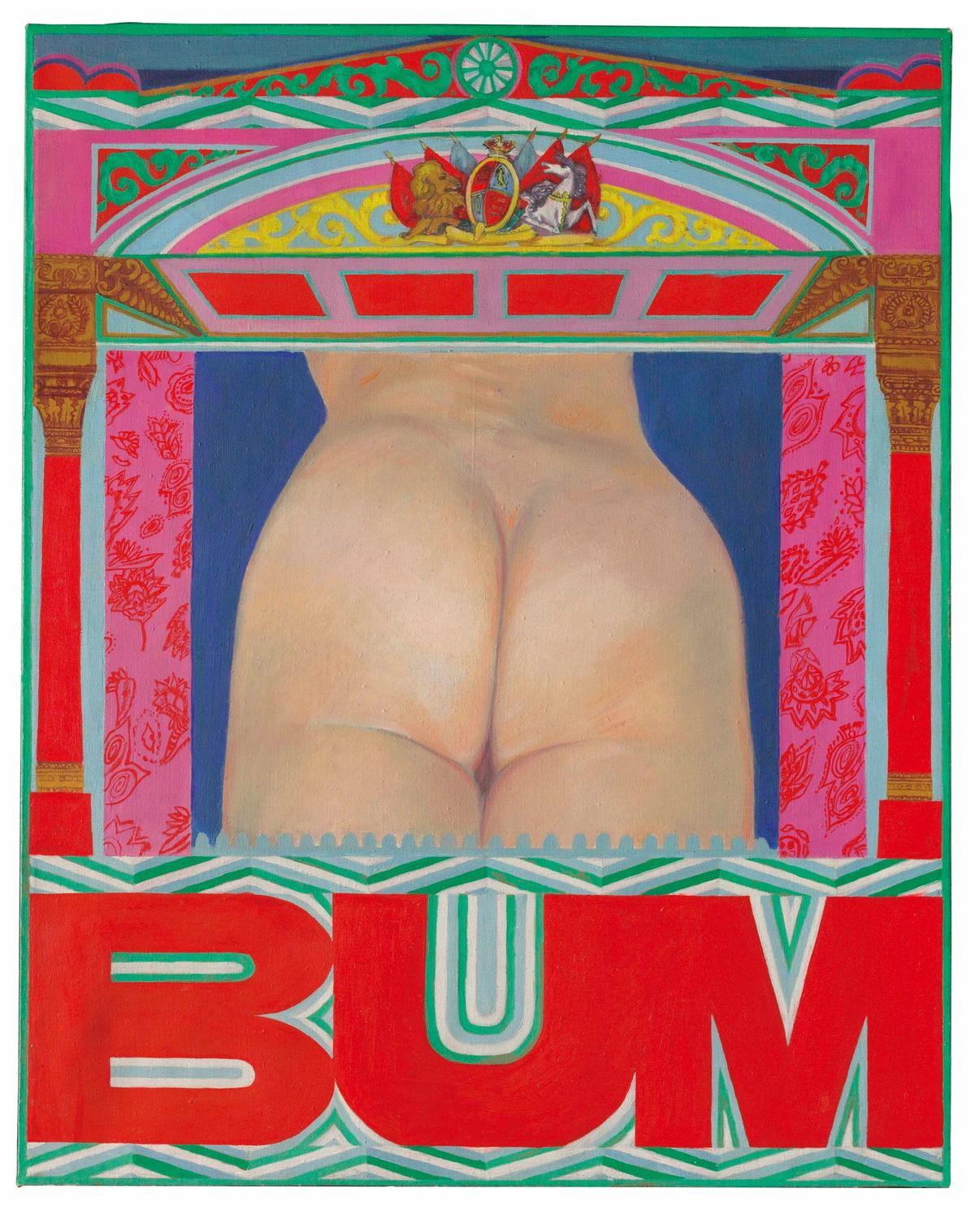The last extant painting by Pauline Boty, one of the founders of British Pop art who died tragically early aged 28, will be auctioned at Christie’s London tomorrow, 22 November. BUM, a cartoonish depiction of a fleshy female bottom framed by a proscenium arch, was painted in 1966, shortly after Boty's cancer was discovered during a pregnancy check up. She died less than five months after giving birth to her daughter.
BUM was commissioned by Kenneth Tynan for his erotic cabaret, Oh! Calcutta!, and has been in the critic’s collection ever since. “There are less than 30 works in existence, and none of her Pop paintings have come to auction before,” says Angus Granlund, the director of Modern British and Irish art at Christie’s. The work is expected to fetch between £200,000 and £300,000, five times her previous record of £40,000, set in 2014.
Although she exhibited in key shows, including the very first Pop art exhibition at the A.I.A. Gallery in London in 1961, Boty’s work disappeared from view for almost 30 years after she died. “She died young, before her reputation was more fully established, and no doubt the inherent sexism of the time was in play,” the art historian Sue Tate says in the sale catalogue.
The circumstances of Boty’s death are tragic. Having been diagnosed with cancer after a pregnancy check up, Boty was offered an abortion so she could have radiotherapy, but turned down both. She died in July 1966, her daughter not five months old. Boty’s husband, the literary agent Clive Goodwin, died in the late 1970s in the US. Their daughter, Boty Goodwin, an artist herself, overdosed and died the night after her graduation.
In the early 1990s, the writer, curator and art historian David Alan Mellor rediscovered key works in a barn on Pauline’s brother’s farm. He went on to restore and exhibit them at the Barbican in 1993. Since then, interest in her work has slowly gained momentum, with her first retrospective, organised by Tate, held at Wolverhampton Art Gallery in 2013.
“Boty has at last been written back into the story of art,” Tate says. “In the wake of feminist interventions and postmodern collapse of hi/low cultural boundaries, the significance of the work is finally fully revealed and it resonates profoundly with contemporary understandings and concerns.”


